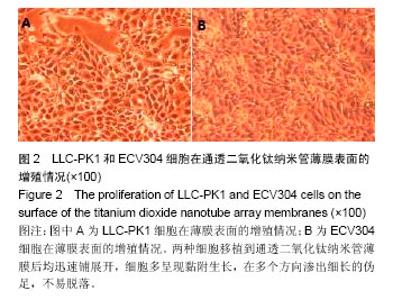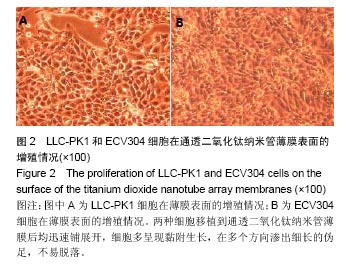| [1]郭增革,程博闻,宋俊,等.聚醚砜含量对纤维素/聚醚砜中空纤维血液透析膜结构和性能的影响[J].材料科学与工程学报, 2012, 30(4):567-570.[2]林晓,肖兆群,蒋挺,等.对重症急性胰腺炎患者合并胰腺感染的危险因素分析[J].当代医药论丛,2014,12(13):212.[3]曹斌,吕德超,王家宝,等.重症急性胰腺炎早期肠功能障碍与继发胰腺感染的关系[J].中国临床保健杂志,2014,17(5):478-479.[4]吴兴茂,吉凯强,汪海源,等.全肠内营养对急性重症胰腺炎的胰腺坏死性感染的预防作用的研究[J].中国现代医学杂志, 2013, 23(4):101-104.[5]肖月,隋宾艳,赵琨.“治未病”理论在慢性肾脏病防治中的应用[J].辽宁中医药大学学报,2013,15(9):164-165.[6]Zhao L,Liu M,Xu Z,et al.PSF hollow fiber membrane fabricated from PSF-HBPE-PEG400 -DMAc dope solutions via reverse thermally induced phase separation (RTIPS) process.Chem Eng Sci.2015;137:131-139.[7]潘献辉,王晓楠,张艳萍.超滤膜截留性能检测用基准物质研究与应用进展[J].膜科学与技术.2013,33(2):104-108,124.[8]兰薇,周结学,许风英.高通量血液透析与常规血液透析的临床疗效比较研究[J].中国医药导刊,2013,15(2):262-263. [9]沙广琴.高通量血液透析与常规血液透析、血液透析滤过的透析效果比较[J].中国保健营养, 2013,23(4):1617-1618.[10]Liu M,Wei Y,Xu Z,et al.Preparation and characterization of polyethersulfone microporous membrane via thermally induced phase separation with low critical solution temperature system.J Memb Sci.2013;437(38):169-178.[11]何惠芬,许晓妹,毛晓红,等.尿毒症血液透析患者长期留置导管感染因素分析及预防策略[J].中华医院感染学杂志, 2013,23(12): 2864-2865.[12]解德琼,朱磊,李程,等.不同透析模式对老年维持性血液透析患者低血压的疗效观察[J].中国医院用药评价与分析, 2013, 13(10):924-926.[13]孙治华,邵宁.血液透析滤过联合血液灌流对治疗顽固性尿毒症患者皮肤瘙痒的临床探讨[J].中国临床新医学, 2015,8(1): 35-37.[14]Ghaemi N,Madaeni SS,Alizadeh A,et al.Fabrication and modification of polysulfone nanofiltration membrane using organic acids: Morphology,characterization and performance in removal of xenobiotics.Sep Purif Technol. 2012;96(3): 214-228.[15]孙子环,夏荣,孙磊,等.二氧化钛纳米管阵列加载重组人骨形成蛋白2的体外生物活性研究[J].中华口腔医学杂志, 2015,50(8): 478-482.[16]天津生,张怡静.不同透析膜对血透患者血清C反应蛋白、白细胞介素-6、白细胞介素七和白蛋白的影响[J].临床内科杂志, 2012,29(1):40-42.[17]Ferraz N,Stromme M,Fellstrom B,et al.In vitro and in vivo toxicity of rinsed and aged nanocellulose-polypyrrole composites.J Biomed Mater Res A.2012;100A(8): 2128-2138.[18]Yi Z,Zhu LP,Zhao YF,et al.An extending of candidate for the hydrophilic modification of polysulfone membranes from the compatibility consideration: The polyethersulfone-based amphiphilic copolymer as an example.J Memb Sci. 2012; 390-391(8):48-57.[19]何惠芬,许晓妹,毛晓红,等.尿毒症血液透析患者长期留置导管感染因素分析及预防策略[J].中华医院感染学杂志, 2013,23(12): 2864-2865.[20]解德琼,朱磊,李程,等.不同透析模式对老年维持性血液透析患者低血压的疗效观察[J].中国医院用药评价与分析, 2013, 13(10):924-926.[21]孙治华,邵宁.血液透析滤过联合血液灌流对治疗顽固性尿毒症患者皮肤瘙痒的临床探讨[J].中国临床新医学, 2015,8(1): 35-37.[22]徐冠雄.尿毒症难治性高血压患者采用血液透析滤过治疗的临床分析[J].右江民族医学院学报,2014,36(6):833-834.[23]Lin SM,Wang YM,Lin HC,et al.Serum thrombomodulin level relates to the clinical course of disseminated intravascular coagulation,multiorgan dysfunction syndrome,and mortality in patients with sepsis.Crit Care Med.2008;36(3):683-689. [24]安书强,杨倩,史长生,等.血液灌流串联血液透析滤过改善尿毒症并发甲状旁腺功能亢进[J].临床误诊误治,2013,26(2):89.[25]梁波,覃学美,周方,等.高通量血液透析联合左卡尼汀改善尿毒症患者贫血的临床评价[J].中国实验诊断学,2015,62(2):287.[26]刘翠兰,刘华,闫志云.血液透析与腹膜透析对糖尿病肾病尿毒症高血压的临床观察[J].河北医药,2014,36(9):1334-1335.[27]Guan JC,Bian W,Zhang XH,et al.Influence of peritoneal transportcharacteristics on nutritional status and clinical outcome in chinesediabetic nephropathy patients on peritoneal dialysis.Chin Med J(Engl).2015;128(7):859-864.[28]陈洁,孔国美,陈萍,等.舒适护理模式在糖尿病肾病血液透析患者中的应用效果观察[J].中国现代医生,2013,51(24):102-105.[29]Larsson T,Marsell R,Schipani E,et al.Transgenic mice expressing fibroblast growth factor 23 under the control of the alpha1(I) collagen promoter exhibit growth retardation, osteomalacia, and disturbed phosphate homeostasis. Endocrinology.2004;145(7):3087-3094. |







